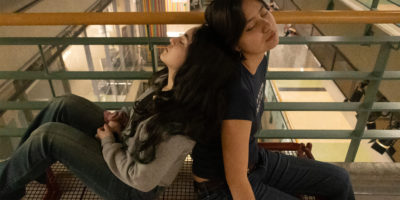By Vanessa Wright
The first thing I did when I walked into orientation in September, was count how many Black people were in my program. I counted six. I remember trying to keep my browsing of the crowd subtle and friendly, as I made my way around the room. I absently greeted professors and advisors who smiled warmly, saying how excited they were for me to be there. But I suspected they were more excited to see some colour in the room. The thoughts in my head were rapid, as I tried to understand why there were only six Black students in a first-year body of roughly 120 students.
I truly was taken aback. Our family moved around a lot, so naturally I knew how to be the new girl at school. I’ve perfected it. But I’ve never had to perfect being one of the only Black students in my class. This to me, was a whole new ball game. It was chilling to think that I might’ve stepped onto prohibited grounds. I grew nervous, and not in a first-day-of-university kind of way. I was nervous because I felt out of place. I felt that because there was a lack of Black people in my program, I wasn’t supposed to be there. Like somehow, I took a wrong turn or missed my exit and ended up in a place that was never meant for me. This evoked fear and doubt in myself, and in my goals, and I was scared I let myself get away with dreaming that Black people could exist in a field that has historically been dominated by white men.
I tried to understand why there were only six Black students in a first-year body of roughly 120 students
I took a seat in the big classroom, opened my notebook, and drifted into deep thought. I thought about the generational blindness to maximizing Black people’s potential. And how older generations failed to encourage young people to break boundaries in white-dominated industries. Maybe our ancestors forced a fake smile and said “that’s wonderful sweetie” one too many times, when we told them we wanted to walk on the moon or become president.
Or maybe the media is to blame—since Black people have been misrepresented in stereotypical roles. Or maybe it’s simply a systemic problem. Maybe institutions aren’t doing their part in enforcing inclusion and diversity, among all fields.
When I left orientation that day, I walked out of the room knowing that I would have to work twice as hard on every story I wrote to break barriers. I knew it wasn’t going to be easy.
But I learned to look at the lack of representation in my program differently. I found opportunity in it. I realized I could trailblaze. I could encourage young Black girls and boys that there isn’t a field that they can’t dominate in. There isn’t a dream that is too far-fetched or bold. This is what motivated me to continue my journey in a white-male dominated field. I refused to let this fact derail me from my purpose.












Jay Rogers
According to NHS 2011 study, black people make up 8.5% of the population of toronto, and less if we’re looking at Ontario (commuter school).
6/120 (120 could be higher or lower since I assume she didn’t count everyone in class) is 5%.
This looks pretty representative of the general population to me. Not that university is supposed to mirror population demographics since it is exclusionary by design.
Vanessa Wright
The point of this piece is for people to recognize the fact that our community has a serious issue regarding lack of representation of races in programs. The goal is break these barriers and create more diversity in classrooms, not justify why there’s a lack thereof.